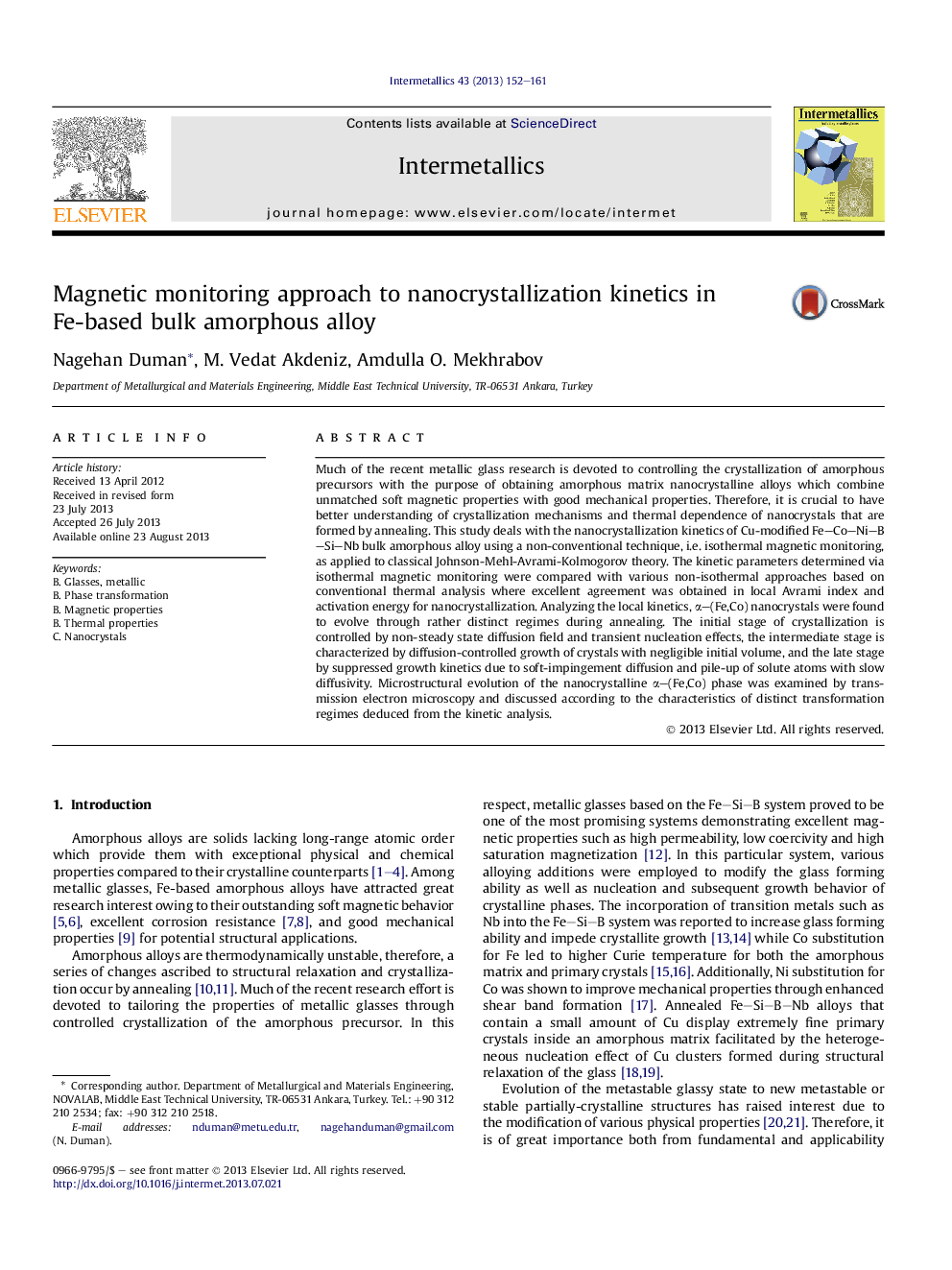| Article ID | Journal | Published Year | Pages | File Type |
|---|---|---|---|---|
| 1600210 | Intermetallics | 2013 | 10 Pages |
•Course of nanocrystallization was tracked by magnetic response during annealing.•Isothermal kinetics by magnetic monitoring agrees well with non-isothermal kinetics.•Nanocrystalline α–(Fe,Co) phase evolves through distinct regimes by annealing.•Deduced kinetic parameters clarified the microstructural evolution of nanocrystals.
Much of the recent metallic glass research is devoted to controlling the crystallization of amorphous precursors with the purpose of obtaining amorphous matrix nanocrystalline alloys which combine unmatched soft magnetic properties with good mechanical properties. Therefore, it is crucial to have better understanding of crystallization mechanisms and thermal dependence of nanocrystals that are formed by annealing. This study deals with the nanocrystallization kinetics of Cu-modified Fe–Co–Ni–B–Si–Nb bulk amorphous alloy using a non-conventional technique, i.e. isothermal magnetic monitoring, as applied to classical Johnson-Mehl-Avrami-Kolmogorov theory. The kinetic parameters determined via isothermal magnetic monitoring were compared with various non-isothermal approaches based on conventional thermal analysis where excellent agreement was obtained in local Avrami index and activation energy for nanocrystallization. Analyzing the local kinetics, α–(Fe,Co) nanocrystals were found to evolve through rather distinct regimes during annealing. The initial stage of crystallization is controlled by non-steady state diffusion field and transient nucleation effects, the intermediate stage is characterized by diffusion-controlled growth of crystals with negligible initial volume, and the late stage by suppressed growth kinetics due to soft-impingement diffusion and pile-up of solute atoms with slow diffusivity. Microstructural evolution of the nanocrystalline α–(Fe,Co) phase was examined by transmission electron microscopy and discussed according to the characteristics of distinct transformation regimes deduced from the kinetic analysis.
Graphical abstractFigure optionsDownload full-size imageDownload as PowerPoint slide
